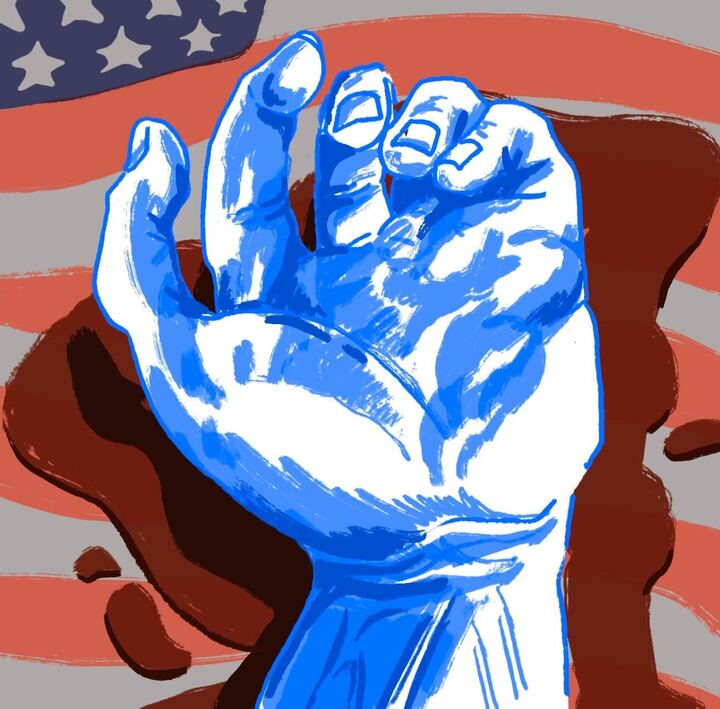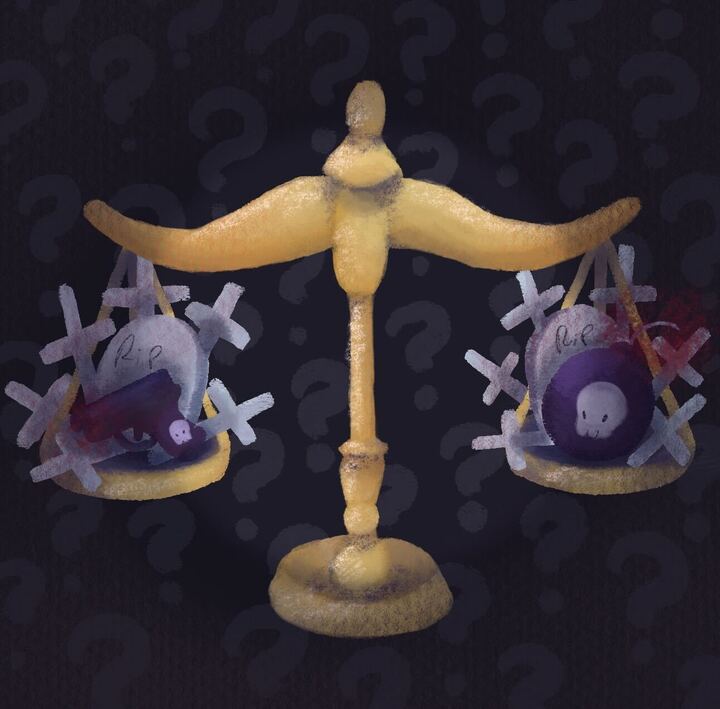He doesn’t look gay.
In your life have you muttered that statement or at least of thought it? It’s a sentence that relies heavily on old stereotypes produced by our culture. He doesn’t look gay because he doesn’t have a limp wrist, hates musicals and packs on the muscle like it’s going out of style. The man is a man’s man, without the weird gay implications.
Growing up in California, I found out early on that masculine qualities were, for all intents and purposes, ideal in the LGBT community. It was a compliment for someone to tell you that you could “pass as straight.” Worse, being slightly feminine at the wrong moment in front of a hostile crowd of heterosexual or homosexual individuals would often invite insults like “queen,” or even the pseudo-loving “gay face” comment.
It wasn’t until college that I recognized the rampant discrimination of femininity in the LGBT community, one that often escalates to marginalization in a group that already has enough hardships and disconnect. This makes the LGBT community come off as nothing but hypocritical.
“If you’re a femme in any way possible, people think you can’t be dominant. You lack leadership skills, you’re emotional. All these stereotypes that used to be employed against women as a whole during the last 50 years,” said Heather Sosa, a senior anthropology major at UC Riverside.
Sosa belongs to the group Queer People of Color, dedicated to open campus LGBT discussions like last week’s “I Like Them Straight Acting Boys.” Sosa and others who have taken a peek at the online dating circuit can attest to the rampant disdain towards femininity in the LGBT community. Phrases like “Only into Masc,” “no queens, no fems, be a man” or “only into str8 acting, no bitches” litter the online dating-verse.
There have been attempts by different fields to identify the reasons behind the negativity towards feminine males and others who don’t fit mainstream roles. Liminality, a concept used by anthropologist Victor Turner, describes the middle stage an individual enters, one where they neither belong to one structure or another. It is a stage of transition where individuals are at their most vulnerable. As CSUN anthropology professor Patrick Polk puts it, “beings in liminal state can be terrifying to other people. They are a combination of both and belong to neither.”
Numerous papers exist on beings considered to be in a permanent liminal state like bisexuals, the intersexed and transvestites. Like the feminine male and masculine female, these liminal groups experience discrimination due to stereotypical implications that the LGBT community refuses to let go while fighting for equal rights. When did it become punishable to be who you are in the LGBT community?
“When my brother came out to us, I think it was easier on all of us due him not being really feminine,” said Gabriella Castro, a 29-year-old DWP engineer.
An ardent supporter of LGBT rights, Castro isn’t surprised about this discrimination. A Mexican-American, Castro reflects on how she still encounters racial discrimination among those within her own community. “You have Mexicans who dislike Salvadorians. Light-skinned Mexicans who look down on dark-skinned Mexicans. Mexicans who even look down on other Mexicans just because the listen to native music while they secretly listen to it as well.”
This begs the question, if a light-skinned, masculine male stood next to a dark-skinned, feminine male, who would more acceptable? Masculinity and a light skin tone is far more mainstream in today’s society and, despite the fact that gay culture is vastly different from 90 percent of the United States straight culture, those that hold both qualities are considered the paragon of our heteronormative, cisgendered, white-privileging culture.
The result is a minority that looks down on femininity in its males unless they display exaggerated levels of “fabulosity” and possess social clout. The LGBT community may want equal rights, but the steps that it has taken to be a part of the mainstream, to be accepted by the straight world, leave a bad taste in my mouth.
Due to this eagerness to be accepted , the cliche motto, “ we’re here, we’re queer, get used to it” no longer has the bite it once had.
Jeffrey Zide
Daily Sundial
The same thing that makes many men a “manly” man is also the same thing that leads men to die, on average, 5-10 years before their female counterparts: masculinity.
Some argue that this difference is due to the sex hormone, testosterone, which makes younger men prone to make rash decisions. While higher testosterone levels slowly harden men’s arteries, the impact of natural and biologically oriented masculinity on society is very slight. Past the age of 35, testosterone slowly declines—fortunate because if not, men would die far earlier than they do already.
The main problem lies more with our societal gender roles and the way masculinity is enforced, exaggerated and reciprocated in our society. This begs the question, “is masculinity good or bad?” In large doses, masculinity is bad for you and if you overdose, it can kill.
One reason it can be problematic is the basic structure of identity formation within our patriarchal culture. Much psychological research has suggested that the male model of development throughout psychological history has put male behavior as the norm, and female behavior as a deviation from that norm. In patriarchal societies, male identity is formed only through individuation and separation from others, while female development is said to be based on relationships with others. The male model might pose a problem for females; often, if they don’t conform, they are seen as a man and any femininity they have is invalidated. If women do conform, they are seen as dependent and “weak”.
However, masculinity also hurts men in relationships. Having problems with intimacy and relationships has led to an epidemic of violence against women and domestic abuse because of men’s need to constantly prove their toughness and push any real emotions, other than anger, into the background.
Contrary to popular ideas about the differences between the sexes, this need is not necessarily inherent or biologically directed, but has mainly been a product of our patriarchal society and structures which value strength and aggression over communication and harmony.
The hyper-masculine norm also enforces aggressive behavior so that violence is seen as acceptable and, even worse, expected of men. According to domesticviolencestatistics.org, it is estimated that 20 to 25 percent of American families have experienced violence, including child abuse, domestic abuse and murder. Among the factors cited besides poverty, stress and history of family violence is a patriarchal history of male dominance.
Domesticviolencestatistics.org also estimates that of the 15.4 million female victims of domestic violence, about half will be murdered by their husbands or boyfriends. This is not simply a matter of bad behavior. Indeed, no “abusive personality” has ever been found in male abusers according to numerous studies. A 1993 study by psychologists Goldman, Koss Fitzgerald, Russo and Keita says “(t)he problem of violence against women cannot be fully understood, let alone solved, by focusing exclusively on individual psychology. Only by changing the social and cultural institutions that have given rise to the problem can a lasting solution be achieved.” This shows that a male-dominated system that encourages violence against others in the pursuit of proof of a masculine identity is harmful in the long-run.
About 80 percent of all DUI arrests are male according to recent research on addiction by a Washington State University professor. This can be attributable because when men ask for help and say they can’t do something, they are considered “weak” by our society. While testosterone promotes more risky behavior, the root of the problem is that men are often reinforced by other men to drink and drive rather than ask for a ride home. I think the consensus of our society is that we would rather have been killing people needlessly (albeit not necessarily intentional in this instance) than them to be considered “weak.”
According to the American Journal of Psychiatry, even though females are twice as likely to suffer from depression as males, four times as many males as females will commit suicide. One reason is males are more likely to use more fatal means including guns and hanging. One could say that men are simply better at suicide than women, but it is more likely that these depressed men just don’t want or know how to get help.
Although testosterone is a factor in aggression in younger men, the problem is not the biology of men. The main problem quite simply is that our societal gender norms are screwed-up beyond all reason.
These arbitrary, hyper-masculine standards for what means to be a man cause suffering for all people in our society, even men. When men disregard all other aspects of their personality in order to conform to rigid gender norms set by our society, they fail as men, as human beings and our society as a whole fails.
Our society needs a radical change in its gender norms if we really want everyone’s lives to change for the better. So long as we participate in a society that continuously shames women and more feminine men for their own femininity, very little in our society will improve.





